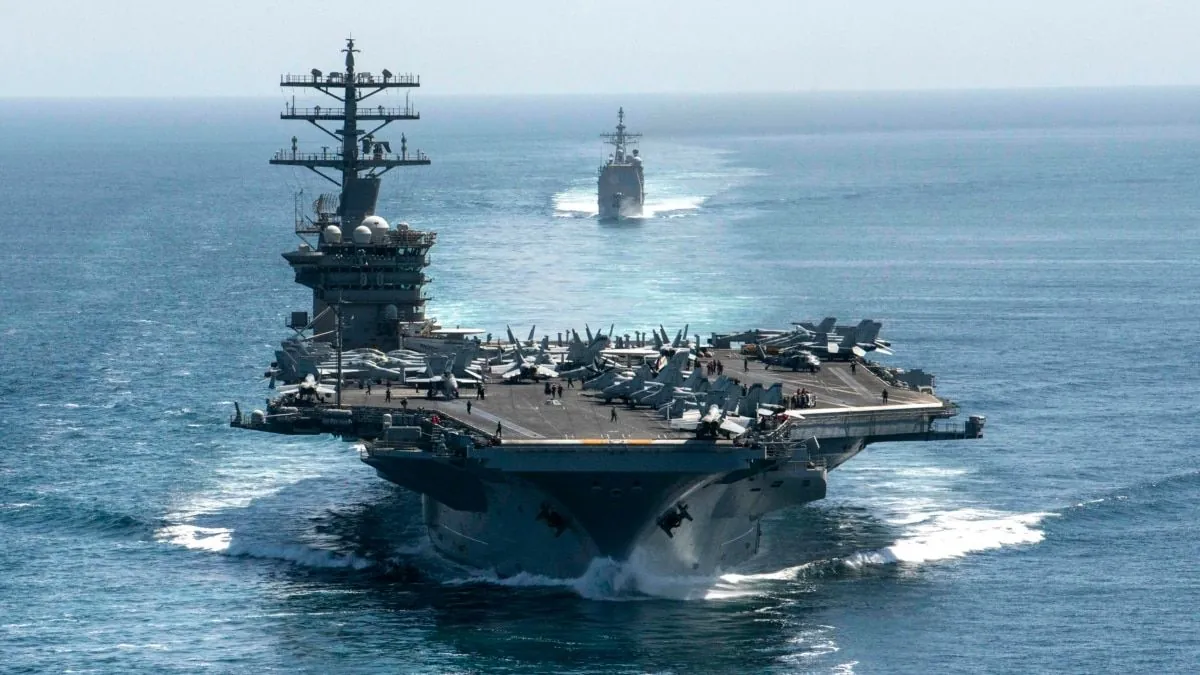The United States has intensified its naval presence in the Middle East by deploying multiple aircraft carriers to the region. This move comes as tensions escalate with Iran following recent events involving Hamas and Hezbollah.
US Defense Secretary Lloyd Austin announced the accelerated deployment of the USS Abraham Lincoln carrier strike group to the Middle East. This decision leaves the Indo-Pacific region temporarily without a carrier presence. The USS Abraham Lincoln, a Nimitz-class vessel spanning nearly 1,100 feet, is accompanied by fighter jet squadrons and guided missile vessels.
The Lincoln joins the USS Theodore Roosevelt, already stationed in the Eastern Mediterranean. This marks the second instance in six months where two US carriers have been simultaneously present in the region, following the October deployment of the USS Gerald Ford and USS Dwight D. Eisenhower.
Jerry Hendrix, a retired US Navy captain, noted, "Two carriers is definitely a signal. It allows us to cover both sides of the Middle East."
These deployments highlight the continued reliance on aircraft carriers as a key component of US naval strategy. Despite concerns about their vulnerability to advanced missile systems, particularly in the Indo-Pacific, carriers remain crucial for projecting power globally.
The strategic positioning of these carriers enables nearly continuous flight operations, providing a significant deterrent and defensive capability. Bryan Clark, a senior fellow at the Hudson Institute, explained that while Iran can launch attacks, the carriers and their escorts are equipped to counter such threats effectively.
"Carriers are often the responsive option. There's a continued trend of seeing carriers deployed to the Middle East for these deterrence and reassurance missions."
The deployment of carriers to the Middle East is not without precedent. In August 2021, the USS Ronald Reagan was redirected from its usual Western Pacific patrol to support the US withdrawal from Afghanistan.
However, the current deployment rate is raising concerns about sustainability. With several carriers undergoing maintenance or nearing decommissioning, the US Navy faces challenges in maintaining its global presence. Clark warned, "It's kind of unsustainable. There may not be a carrier available to go to the Pacific because it may have to go to the Middle East."
As the situation develops, the effectiveness of these deployments in deterring potential Iranian actions remains uncertain. Nonetheless, the carriers continue to play a vital role in air defense and regional security efforts.
The US Navy's reliance on aircraft carriers underscores their significance in modern naval operations. These floating cities, with crews of around 5,000 personnel and the ability to carry over 60 aircraft, represent a formidable display of military capability. As tensions persist in the Middle East, the strategic value of these massive vessels in projecting power and maintaining global stability remains evident.
